
Space Traffic and Orbits – As we venture further into the era of space exploration and utilise the vast expanse above us, managing space traffic and maintaining orderly orbits becomes a pressing concern. With an increasing number of satellites, human-operated missions, and space debris, the need for efficient space traffic management systems is clearer than ever. To avoid potential collisions and ensure the safety of both robotic and manned spacecraft, we must establish and adhere to thorough and effective protocols.
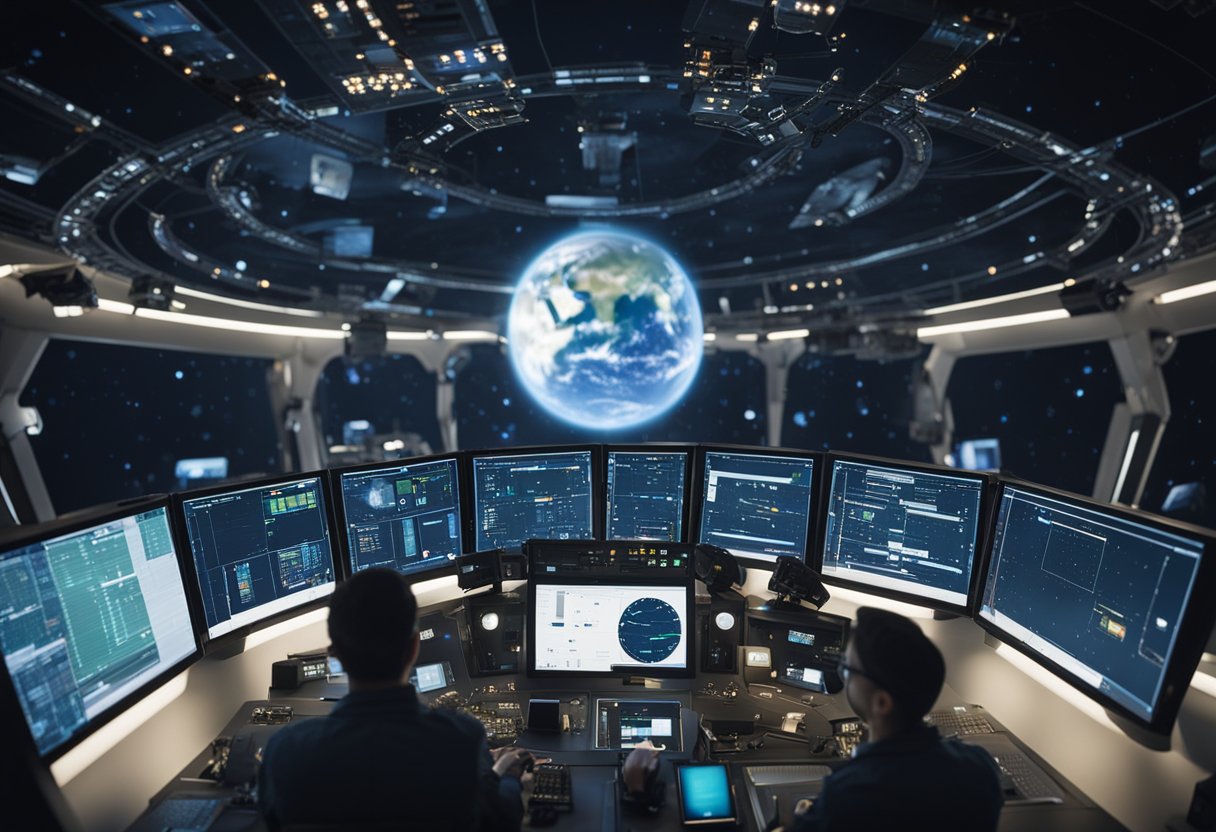
Effective space traffic management encompasses a wide array of considerations, from the monitoring and surveillance of objects in space to the mitigation of space debris. The different types of orbits – geostationary, low-Earth, and polar – each serve unique purposes and have varying levels of traffic and potential for debris accumulation. As we continue to expand our presence in space, staying abreast of technological advancements and fostering international collaborations is crucial. Balancing the ambitions of spacefaring nations and private entities with the need for a sustainable outer space environment is a challenge that requires a multifaceted approach, integrating legal, policy, and technical perspectives.
Ensuring the longevity of space operations also involves addressing emerging challenges, such as the potential overcrowding of popular orbits and the influx of new actors in the space domain. Anticipating the future outlook of space traffic, we must prepare for the questions and complexities that will arise as part of our ongoing journey in space exploration.
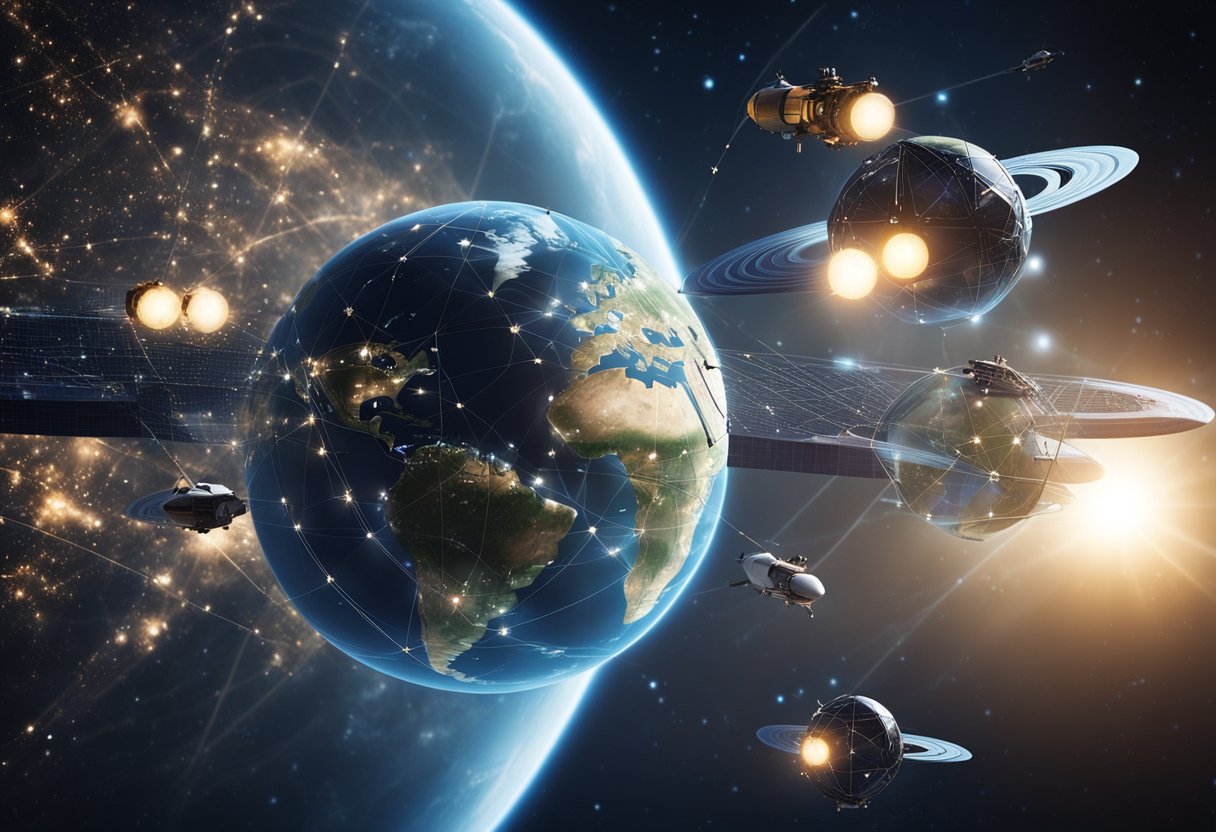
In this section, we’ll examine the essential aspects of Space Traffic Management (STM), its pivotal role in current space operations, the guiding principles it adheres to, and the key entities involved in its governance.
STM refers to the set of technical and regulatory measures designed to ensure safe and efficient movement of satellites, space stations, and other vehicles in Earth’s orbit. Similar to air traffic control, STM aims to prevent collisions, manage space debris, and coordinate satellite paths to maximise safety and operational effectiveness.
With the advent of commercial space ventures like SpaceVoyageVentures.com, which charts the expansion of space tourism, alongside government and private satellites, the need for rigorous STM has never been more pressing. Effective STM ensures the sustainability of space activities by maintaining safe distances between objects and managing the increasing traffic in near-Earth space.
STM is founded on globally accepted principles:
Various international entities play pivotal roles in STM’s implementation. The United Nations Office for Outer Space Affairs (UNOOSA), for example, works at the international level to promote peaceful cooperation in space activities. Meanwhile, national agencies, such as NASA and the European Space Agency (ESA), work within a framework of standards and guidelines to orchestrate STM tasks specific to their respective regions.
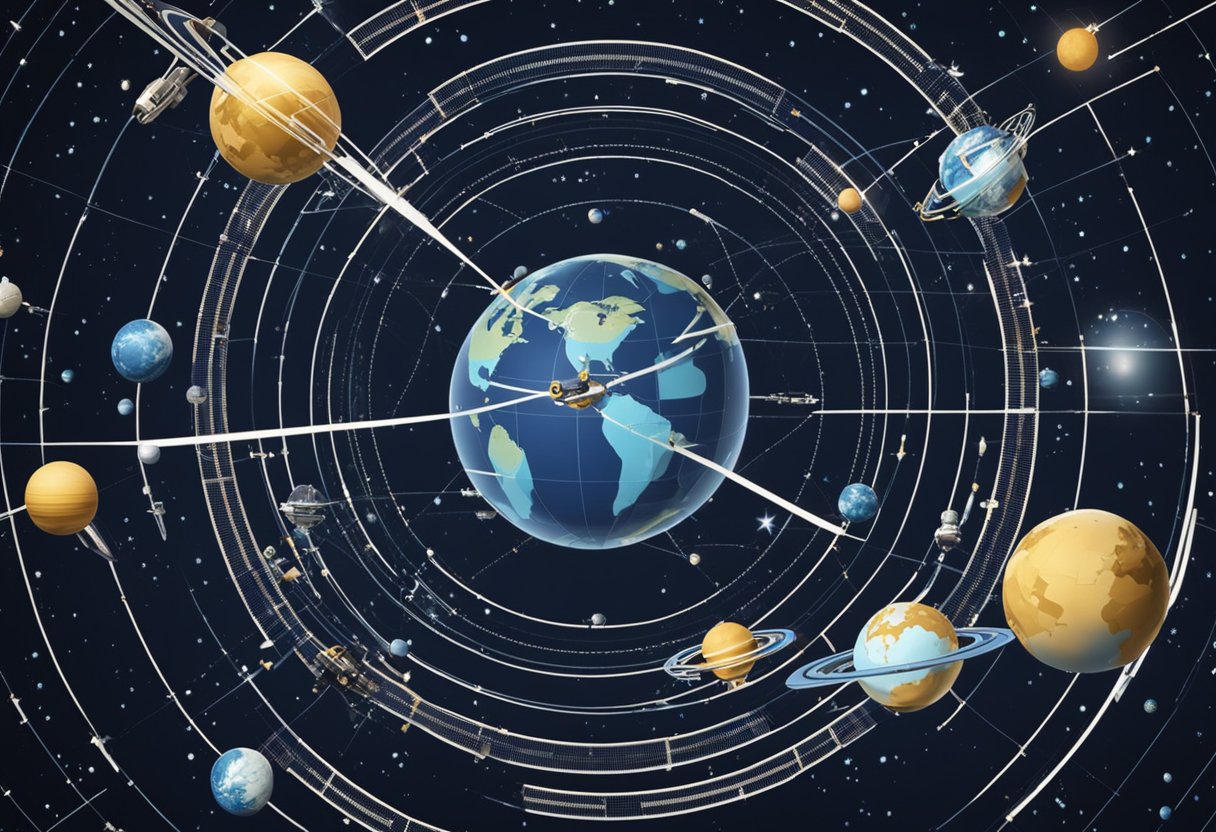
Navigating the vastness of space requires a thorough understanding of the different types of orbits and their respective uses. These orbits are critical for various space operations, including those concerning communications, Earth observations, and access to space.
Low Earth Orbit (LEO) is the band of space closest to the Earth’s surface, extending from about 160 to 2,000 kilometres above. Within LEO, we find the densest concentration of satellites which are usually tasked with Earth observation due to their close proximity to the planet. This region is particularly advantageous for capturing high-resolution imagery and facilitating quick communication relays. Additionally, the majority of human spaceflights occur in LEO, including missions to the International Space Station (ISS).
Beyond LEO, there are other critical orbital paths we utilise. A Geostationary Orbit (GEO), approximately 35,786 kilometres above Earth’s equator, allows satellites to match the planet’s rotation. Satellites here appear stationary from the ground and are pivotal for constant communication over a particular region. Heavily relying on GEO, telecommunications and weather monitoring systems provide persistent coverage. Other orbits, such as Medium Earth Orbit (MEO), crucial for navigation systems like GPS, bridge the gap between LEO and GEO, being positioned at altitudes of about 5,000 to 20,000 kilometres.
Orbits hold immense economic and strategic value due to their applications in diverse fields. LEO, being relatively easy to access and exit, is commercially attractive for space tourism ventures and satellite constellations. Foreseeable ventures, such as those highlighted by SpaceVoyageVentures.com, aspire to provide orbital experiences. On the other hand, GEO’s stable positioning makes it highly sought after for satellites that must maintain a fixed position over the Earth, such as those for broadcasting and weather forecasting. Each orbit supports key infrastructures that drive innovation, security, and exploration in our pursuit of space.
Effective monitoring and surveillance are paramount to managing the increasing complexity of space traffic. Our focus is on ensuring the safety and sustainability of space operations, encompassing the detection, tracking, and characterisation of objects in orbit.
Space Situational Awareness encompasses our understanding of the space environment, which includes both operational satellites and debris. We maintain an extensive catalogue of space objects and utilise sophisticated sensors to detect new objects entering Earth’s orbit. This comprehensive surveillance is essential to avoid potential collisions and to safeguard assets in space.
Our observations are critical in providing timely intelligence on the positions of satellites and debris. We employ telescopic cameras and radar systems to monitor space objects. Our data analysis capabilities allow us to predict trajectories, identify potential threats, and assess risks to space operations.
To track and catalogue space objects accurately, we deploy a range of technologies including ground-based radar and optical systems. The information gathered helps us ensure that spacecraft can manoeuvre safely in a congested environment. We continually update our systems with the latest technological advancements to improve the granularity and reliability of our tracking efforts.
By integrating these elements into our space traffic management operations, we uphold a high standard of safety and responsibility in the increasingly busy domain of space.
We recognise the critical need to address the proliferation of space debris as satellite launch activities become more frequent. This section covers the urgency of managing debris, outlines best practices for orbital debris mitigation, and examines ongoing active debris removal initiatives.
The accumulation of space debris in Earth’s various orbit regimes poses a significant risk to operational spacecraft and future missions. Debris includes defunct satellites, spent rocket stages, and the fragments from collisions. As the quantity of debris increases, the probability of potentially hazardous collisions rises as well, leading to a cascading effect known as the Kessler Syndrome.
Orbital debris mitigation encompasses measures aimed at minimising the creation and presence of debris in space. For example, spacecraft and upper stages are now designed to limit debris released during normal operations. Moreover, measures are taken to ensure that debris larger than 5 mm that could potentially remain on orbit for more than 25 years is thoroughly evaluated, and its release is justified. A comprehensive set of guidelines, such as those detailed in the Orbital Debris Mitigation Standard Practices, helps inform these efforts.
Best practices for mitigation include:
Active debris removal (ADR) is a more direct approach to managing space debris. ADR refers to the process of identifying and removing defunct satellites and other objects from crowded orbits. Several initiatives are underway to develop technologies for safely capturing and deorbiting these objects. One leading concept involves deploying nets or harpoons to retrieve and then safely dispose of debris.
Our efforts join a global commitment towards a sustainable presence in space, ensuring the preservation of the orbital environment for future generations and sectors, including emerging space industries like those found on SpaceVoyageVentures.com, which explores the potential of space tourism.
As we venture further into the cosmos, ensuring the safety of our spacecraft and satellites becomes of paramount importance. Our focus in this section is on maintaining space safety and minimising collision risk through various measures.
Conjunction analysis is a principal method we utilise to evaluate potential collision risks. This process involves predicting close approaches between our space assets and other orbiting objects, such as debris or operational satellites. To support this, we rely on a comprehensive catalog of space objects, where orbital data is constantly updated to track the trajectories of space entities.
Orbital Data Sources: We harness information from multiple tracking networks and data-sharing alliances to maintain our knowledge base. This allows us to monitor the positions of satellites with higher precision, offering a solid foundation for our analyses.
Risk Assessment Algorithms: By integrating advanced algorithms, we accurately predict conjunction scenarios and determine probability thresholds for collision. These thresholds help inform our decision-making process regarding potential avoidance manoeuvres.
Implementing automated collision avoidance manoeuvres is essential to maintain a safe orbital environment. Our spacecraft are equipped with on-board propulsion systems that can execute evasive manoeuvres autonomously when a potential collision is detected.
Manoeuvre Planning: Predictive modelling guides our creation of manoeuvre plans that are designed to enhance the safety of spacecraft without disrupting their mission objectives. These plans take into account fuel consumption, the potential impact on the mission timeline, and subsequent orbital adjustments.
Communication Protocols: Continuous communication ensures that all relevant parties, including space agencies and commercial operators like NASA’s practices for spacecraft safety, are aware of the planned manoeuvres and can adjust their own assets if necessary.
In order to shield our spacecraft from potential impacts, we’ve developed spacecraft protection measures that range from physical shields to operational strategies.
Whipple Shields: These multi-layered barriers are designed to disperse the energy and break apart incoming debris before it can damage vital spacecraft components.
Operational Guidelines: We adhere to guidelines established by international agreements and best practices for space operations to ensure all space-faring entities operate in a manner that reduces the risk of collisions.
By upholding these standards and constantly improving our techniques for collision avoidance and protection, we contribute towards a sustainable and secure space environment for future generations and endeavours, including the pioneering spirit of ventures like SpaceVoyageVentures.com.

In the realm of space traffic, legal and policy frameworks are critical for maintaining order and safety. These frameworks encompass international guidelines, national regulations, and norms of behaviour that guide the operations of satellites and other spacecraft.
The United Nations has been instrumental in establishing the legal groundwork for space activities through a series of treaties and resolutions. Key among these is the Outer Space Treaty of 1967, which lays down foundational principles for all space-faring nations. This treaty, along with subsequent agreements such as the Rescue Agreement, Space Liability Convention, and Registration Convention, form the core of international space law. Adherence to these principles ensures that space activities are conducted in a manner that preserves the outer space environment and avoids harmful interference with other space objects.
Nationally, countries have developed their own regulatory frameworks to govern space activities. The National Space Traffic Management Policy is one such framework that the United States has put forth to manage the growing number of space operations. This policy seeks to enhance the safety of flight operations and to foster a stable space environment. Internationally, regulatory bodies work to harmonise national policies. They do this through coordination efforts and by creating standards and best practices that nations can adopt. Among these international entities, the International Telecommunication Union (ITU) plays a significant role by allocating spectrum and negotiating orbital slots to avoid signal interference.
As space becomes increasingly congested, the establishment of norms of behaviour is essential. These norms are forming through ongoing dialogues among space-faring nations and organisations, aiming to promote responsible actions in space. These include avoiding the creation of long-lasting space debris and sharing information about space operations. Norms of behaviour help to ensure that all space actors are working towards the same objectives of sustainability and safety in space, thereby reducing the risks of collision and conflict.
In managing space traffic and orbits, it’s imperative to consider the diverse roles of various stakeholders and agencies. From regulating debris to overseeing national security interests and facilitating private sector contributions, these entities collaborate to sustain the orbital environment.
The Inter-Agency Space Debris Coordination Committee plays a crucial role in international collaboration. IADC comprises space agencies from multiple countries, focusing on mitigating the risks posed by space debris. Their work informs guidelines and policies, ensuring that entities like The Aerospace Corporation contribute to the longevity of space operations through research and the development of mitigation strategies.
National security and defence are paramount in space traffic management, with agencies keenly monitoring assets to prevent conflicts and ensure the protection of critical infrastructure. The intersectionality between commercial endeavours, such as those from SpaceX, and governmental defence interests necessitates a framework that accommodates both without compromising either.
The private sector, including burgeoning space tourism ventures like SpaceVoyageVentures.com, has a vital part to play in sustainability in space. As these entities embark upon commercial spaceflights, they must embrace responsibility for their impact on orbital traffic and debris. Regulatory compliance by these companies reinforces risk reduction and fortifies overall space traffic management.
Our collective efforts in these areas are geared towards securing a safe and sustainable environment for the continuance of space activities across all sectors.
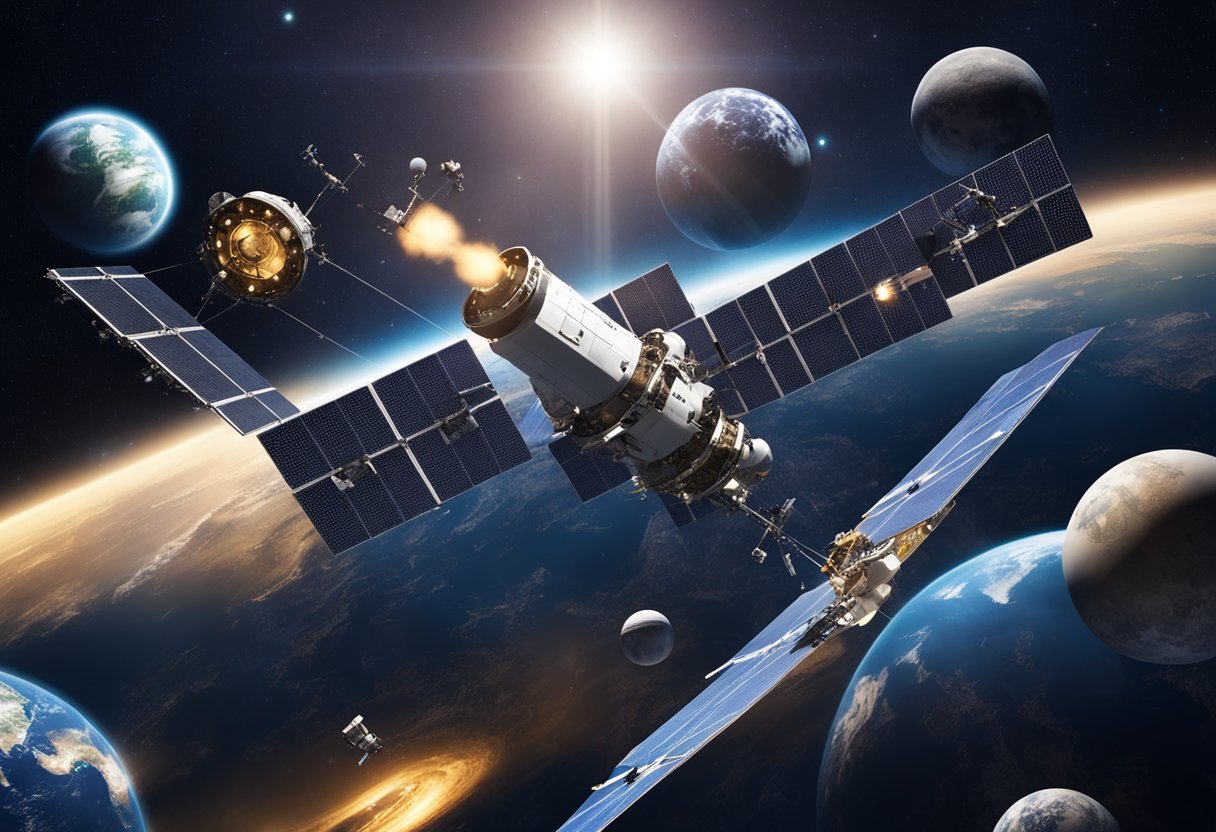
In managing space traffic and orbital hazards, it’s paramount that we establish strong international partnerships and employ a unified approach across agencies and nations. These collaborations are essential in ensuring the safety and sustainability of space operations.
Forging global partnerships is crucial for the effective management of space traffic. We, along with European allies and other spacefaring nations, are at the forefront of creating comprehensive alliances. The pooling of resources and information among countries like the European Space Agency, Russia, China, and others leads to more cohesive and effective strategies in space management.
To ensure safe and equitable use of outer space, harmonisation of space traffic management practices is essential. Working alongside partners like the International Academy of Astronautics, we strive to establish a set of technical and regulatory provisions that promote safety and minimise the potential for conflicts and interference in space.
Coordinating with international space agencies forms the bedrock of our efforts to sustain the space environment. By collaborating closely with agencies from the United States, Russia, Europe, Japan, and Canada, we enhance our shared capabilities to track and manage space debris and traffic. For instance, the support facilities around the world are instrumental in the operation and management of intricate projects like the International Space Station.
Through these international collaborations, we acknowledge the growing interest in space activities, including nascent space tourism ventures like SpaceVoyageVentures.com, and recognise the need for inclusive and comprehensive space traffic management to safeguard the interests of all parties involved.
In our pursuit of a sustainable presence in space, we have made significant technological strides, particularly in the fields of on-orbit servicing, space surveillance, and traffic communication systems, which are essential for the safety and longevity of spacecraft.
The advent of on-orbit servicing has revolutionised the way we maintain spacecraft. This burgeoning field includes the launch of service vehicles that can dock with ageing satellites to refuel them, repair, or even upgrade their systems. The implementation of such technology extends the lifespans of our assets in space, reducing the need for costly replacements and mitigating the growth of space debris.
In terms of surveillance, radar technology has undergone significant advancements, furnishing us with the ability to track smaller debris with greater precision. Upgraded radar systems provide higher resolution images and improved tracking capabilities for objects in low Earth orbit, contributing to escalated collision avoidance measures and enhanced space traffic management.
Our communication systems have also experienced substantial innovations. The development of automated communication networks facilitates instantaneous data exchange between spacecraft, enabling more adept manoeuvring in the increasingly crowded space environment. These systems leverage cutting-edge algorithms to predict potential collision scenarios, furnishing operators with the tools to make informed decisions swiftly.
Through these technological advancements, we bolster our capabilities to manage space traffic effectively and maintain the safety of our orbital paths for future ventures, including those planned by pioneering space tourism entities like SpaceVoyageVentures.com.
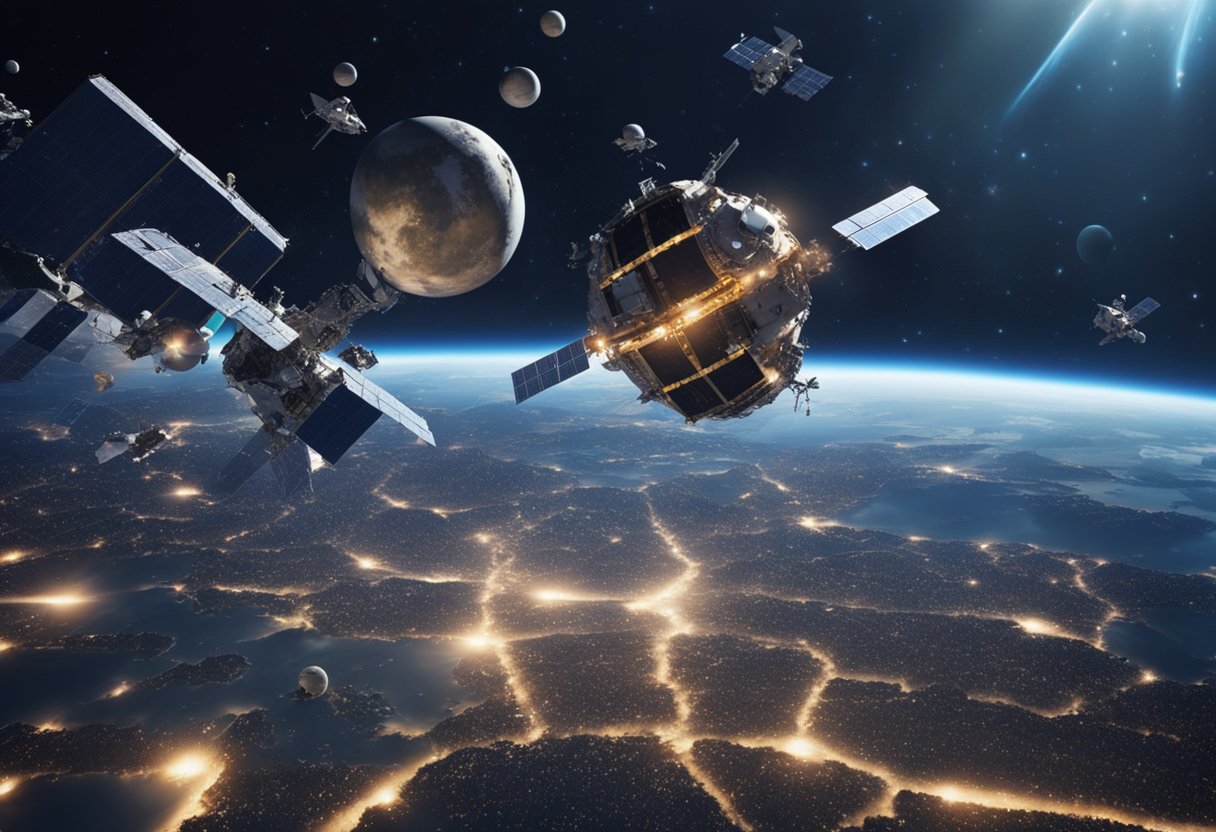
In addressing the future of space operations, it is imperative that we consider the consequences of increased satellite deployments and the advent of space tourism on space traffic. We must also keep an eye on the dynamic trends influencing space traffic management strategies.
As companies continue to deploy large constellations of satellites, the risk of orbital congestion significantly escalates. Space sustainability is paramount, and these constellations, often comprising hundreds or even thousands of satellites, pose a noteworthy challenge to space traffic. The satellites serve diverse purposes, from telecommunications to earth observation, but together they increase the complexity of orbital management. It is essential to develop comprehensive frameworks for monitoring and coordinating their movements to avoid collisions and maintain the usability of key orbits.
The emerging market of space tourism beckons with experiences once thought to be the exclusive province of astronauts. However, this progression is not free from risks. Increased launches and the potential for human habitation in space necessitate stringent safety standards and traffic management to safeguard not only the tourists but also the assets of other stakeholders. We are monitoring entities like SpaceVoyageVentures.com, which document current and forthcoming space tourism endeavours, to understand and plan for the implications of this burgeoning sector on orbital operations.
We anticipate significant advancements in the techniques and technologies underpinning space traffic management. Enhanced tracking systems, automated collision avoidance manoeuvres, and innovations in satellite design are likely to play pivotal roles. Moreover, international cooperation and the formulation of universal standards will be indispensable in addressing the challenges posed by large constellations and the advent of space tourism. These measures are essential to protect the even more crowded skies of tomorrow, ensuring long-term viability and safety for satellites and other space-bound ventures.
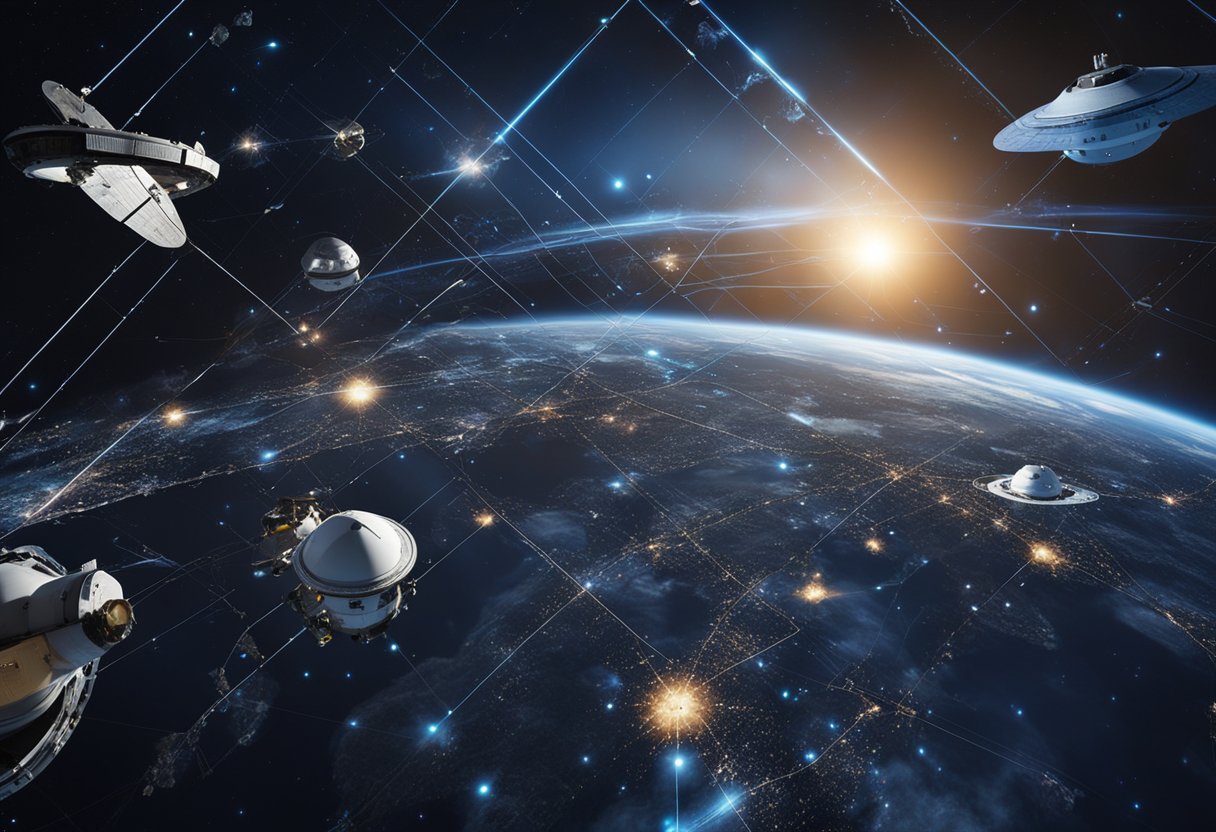
We’ve compiled essential queries frequently asked about space traffic and orbit management, addressing concerns from regulation to collision avoidance and debris mitigation.
We ensure that the plethora of satellites entering orbit is managed by implementing stringent regulatory frameworks. International bodies work alongside national organisations to track and regulate space objects, a process known as space traffic management (STM).
To prevent collisions, various measures such as the adoption of standard procedures for satellite operations, creation of norms for space traffic, and enhanced tracking technologies are in place. These systems work collectively to manage the movements of satellites and debris in space.
Space debris is routinely tracked by a global network of sensors and radars. Organisations have established protocols for satellite operators to manoeuvre their assets if a potential collision is detected. Moreover, advancements in debris removal technologies aim to actively reduce the quantity of debris in orbit.
International agencies facilitate the collaboration between nations and set global standards, akin to aviation management. They provide a platform for the sharing of space situational awareness data and the development of coordinated efforts to manage space traffic safely.
New spacecraft are designed with the capabilities to adhere to STM regulations, incorporating features for responsive manoeuvring, automated collision avoidance, and end-of-life deorbiting or relocation to a graveyard orbit to prevent space congestion.
Sophisticated systems and algorithms have been developed for the prediction of potential space collisions. Organisations like NASA utilise traffic management systems to coordinate satellite paths and recommended actions, ensuring safe distances between objects are maintained.